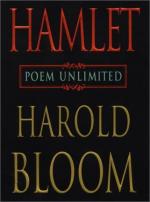|
This section contains 3,301 words (approx. 12 pages at 300 words per page) |

|
SOURCE: "Harold Bloom and High Modernism," in Boundary 2, Vol. V, No. 3, Spring, 1977, pp. 935-42.
In the following essay, Eiland discusses Bloom's theory of repression and revisionism as creative forces for poets.
In The Anxiety of Influence Harold Bloom claims for his theory a "deliberate literalism", yet in that book and its successors his interpretations of poems have been hardly "literal." In Poetry and Repression, in fact, the motivating critical question is: "What is being repressed here?"—and it stimulates a search for meanings that are latent, more or less concealed from the poet himself. "Literal" or manifest meaning is usually a self-deception, a defense against an anterior poetic stance or "fathering force." Poets don't necessarily "mean" what they think they do or what they overtly say; their writing deviously "voices" a dark psychic drama emanating from an ambiguous preconscious realm of contending forces, voices a text of images...
|
This section contains 3,301 words (approx. 12 pages at 300 words per page) |

|


